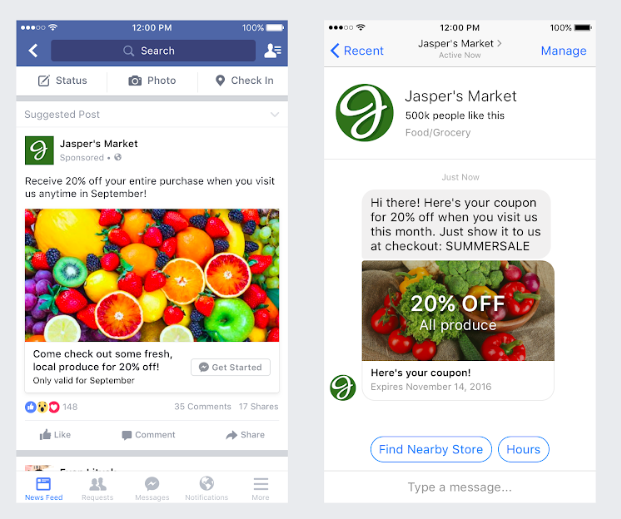A quick how-to to get you started on this powerful growth channel
One of the most-asked questions Paloma hears from convos with marketing teams is:How does our brand start interacting with customers on Messenger?
Messenger is an opt-in friendly channel. It’s a lot like email — you need to have someone’s email address to contact them. With Messenger, instead of asking the customer for their email address, you’re asking the customer to say “hi.” It’s new territory, but the ways to do it are simple. Let’s go!
How do you bring customers to Messenger? Here are 4 paths that work really well:
1. Facebook and Instagram ads that point to Messenger
Instead of driving customers to your website, you can set the Campaign Objective to “Messages” to drive customers to your Messenger account.
Potential customers browsing Facebook or Instagram see the ad for your brand, with a CTA that says something like: “Message us.” Instead of being dropped onto a website to fend for themselves, they are linked straight into your Messenger account (on desktop or on mobile) and from there, the personalized conversation (and the conversion) starts!
2. Website chat plugin
This chat plugin lives in the lower right corner of your website. Use the plugin like a personal sales assistant — one that can automate your sales funnel, effectively scaling a one-to-one sales experience for the customer.
The best part? Because the conversation is happening within Messenger, when the customer leaves your site you already have a way of re-engaging them in the same channel, no matter where they may have wandered off to..
Customers on your website see the chat plugin in the bottom corner, and in one click can start a conversation. They’re now subscribed, and can receive messages through the Messenger app wherever they are.
3. A social post, an email with a link… basically anywhere where links are found
Anywhere you’d link to your website, you can link to your Messenger account with a shortlink. Just like in a link from an ad, this link drops the customer straight into your Messenger page (on desktop or on mobile).
Potential customers who click a link to Messenger from your website (or social media or email) will be directed to Messenger.com in the browser, or deeplinked into the Messenger app on their phone — landing specifically on your brand’s account where they can start the conversation.
4. Organically on your brand’s Facebook page
Brands can set their Facebook Page’s Messenger window to open automatically by going to the “Messaging” section at the top of your Facebook Page Settings, and then under General Settings, toggle the “Prompt people to send messages” to ON.
When customers land on a brand’s Facebook page on desktop, the Messenger chat will already be open. Buttons help make it easy for customers to start the conversation.
For brands scaling this high impact channel, all of these paths make it really easy for customers to engage and opt-in. With automated conversation funnels in place these leads can quickly be qualified and converted wherever they are.
Original article published here

